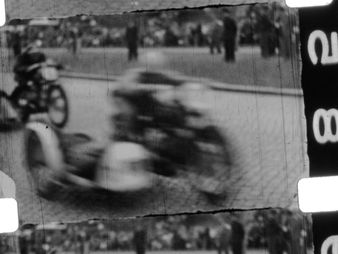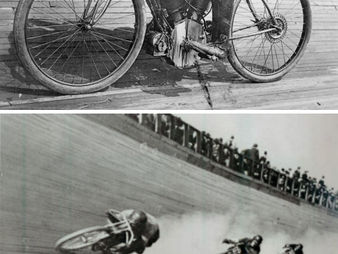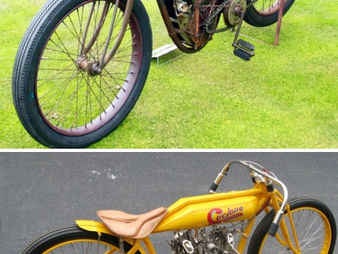

Motorcycles Get to Work
Internal-combustion engines don't consume fuel when they are not working. This is unlike horses. It is therefore not a surprise that...


Germans Give Back
German designs clearly influenced and propelled Japan’s postwar motorcycle industry. It is evident in this DKW. The Germans would provide...


My First Experience With Motorcycles
This fuzzy16mm movie frame of a sidecar race on a Berlin street was taken the day motorcycling made its first impression on me. My uncle...


A Real Formula for Disaster - Part III
Board track racing was an exciting opportunity for young men to gain notariety and make some serious money. They could earn $2,000 a...


A Real Formula for Disaster - Part II
Board track racers of the nineteen-teens and early nineteen-twenties were motorcycles on steroids. Most featured highly modified and...


A Real Formula for Disaster - Part I
As motorcycle engines increased in power, so did their speed. A modified V-twin of the nineteen-teens could produce 30 to 45 horsepower;...


Motoball... Where Have You Been Hiding?
Motorcycle Polo, or Motoball, as it is called in Europe, is essentially a soccer game where the players are on motorcycles. The ball is...






















